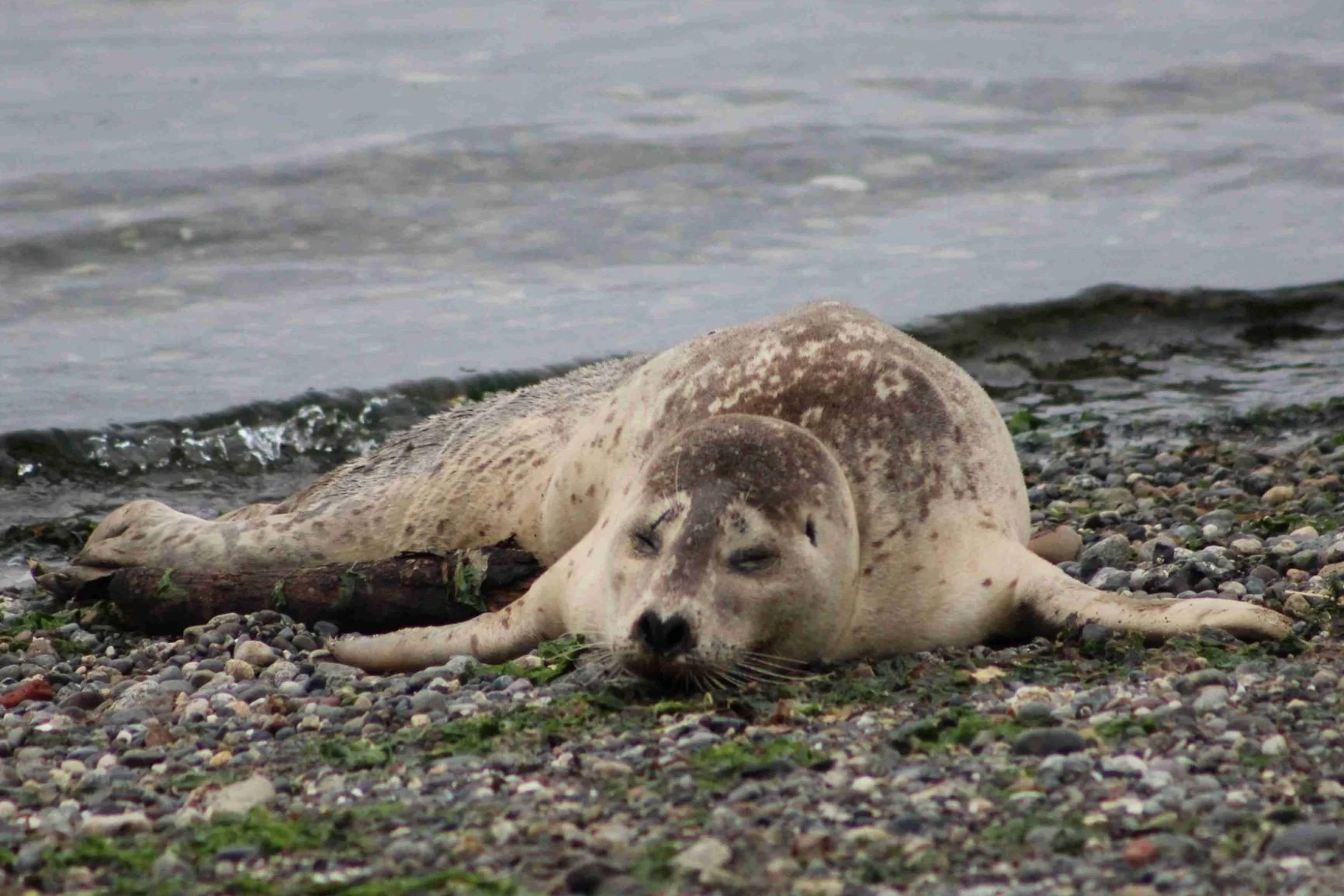
You can make a difference for marine wildlife in the Pacific Northwest by calling to report sick, injured or entangled animals.
Report An Animal
If you believe a marine animal is sick, injured or otherwise in distress – or if you see a harbor seal pup alone on the beach, please immediately contact the SR3 hotline.
See an animal in distress or a pup on its own?
SR3 serves a total of 3,000 miles of coastline in Oregon and Washington state. Learn about who to call in other coastal areas.
Do not approach or touch marine wildlife.
Even if an animal appears hurt or sick, the best thing you can do to help is to call the experts and keep yourself and your pets a safe distance away. Do not push the animal back into the water. When marine animals, including whales and dolphins, come ashore due to illness or injury, returning them to the water immediately can actually reduce their chances of survival.
Trained responders will assess the animal’s condition and work with SR3 as needed to take action. Marine mammals—including seals, sea lions, sea otters, whales and porpoises—are protected by federal laws that require the public to stay 100 yards away (about the length of a football field).
What Does an Animal In
Distress Look Like?
Healthy
Marine mammals like seals and sea lions do spend time on land warming up or resting. They also come ashore during breeding season to mate, give birth and nurse their young. Some species, like elephant seals, spend several weeks on land each year molting, or shedding their fur.
Distressed
A seal or sea lion in distress may be noticeably skinny, or you might see a visible injury or entanglement. In other situations, it may be less obvious that an animal needs rescuing, like in the case of a harbor seal pup that has been abandoned by its mother. That’s why it’s best to alert the experts and let them assess the animal’s condition.
What is Normal Behavior?
Harbor Seals
Harbor seals often spend time out of the water on beaches warming up or resting. You may observe them from more than 100 yards away (about the length of a football field) with binoculars or a spotting scope. Mother seals stay with their pups nursing for about a month, and rarely stray further than nearby waters during that time. If you see a harbor seal pup on its own, call the SR3 hotline: 000000000.
Sea Lions
Sea lions often form small- or medium-size groups and actually take naps in the water. Sometimes when they are sleeping, they will put a flipper out of the water to thermoregulate, or get rid of excess heat. This grouping behavior is called “rafting” and sometimes looks like the animals are entangled in a net. If you see a sea lion with an injury or fishing line wrapped around its body, call the SR3 hotline: 000000000.
Elephant Seals
Elephant seals spend about nine months of the year out at sea but come to shore from December to March for breeding and giving birth. Adults also come to shore between March and August to molt, or shed their fur, and can appear to have patchy skin. You may observe them from more than 100 yards away (about the length of a football field) with binoculars or a spotting scope. If you see an elephant seal with an injury or fishing line wrapped around its body, call the SR3 hotline: 000000000.




